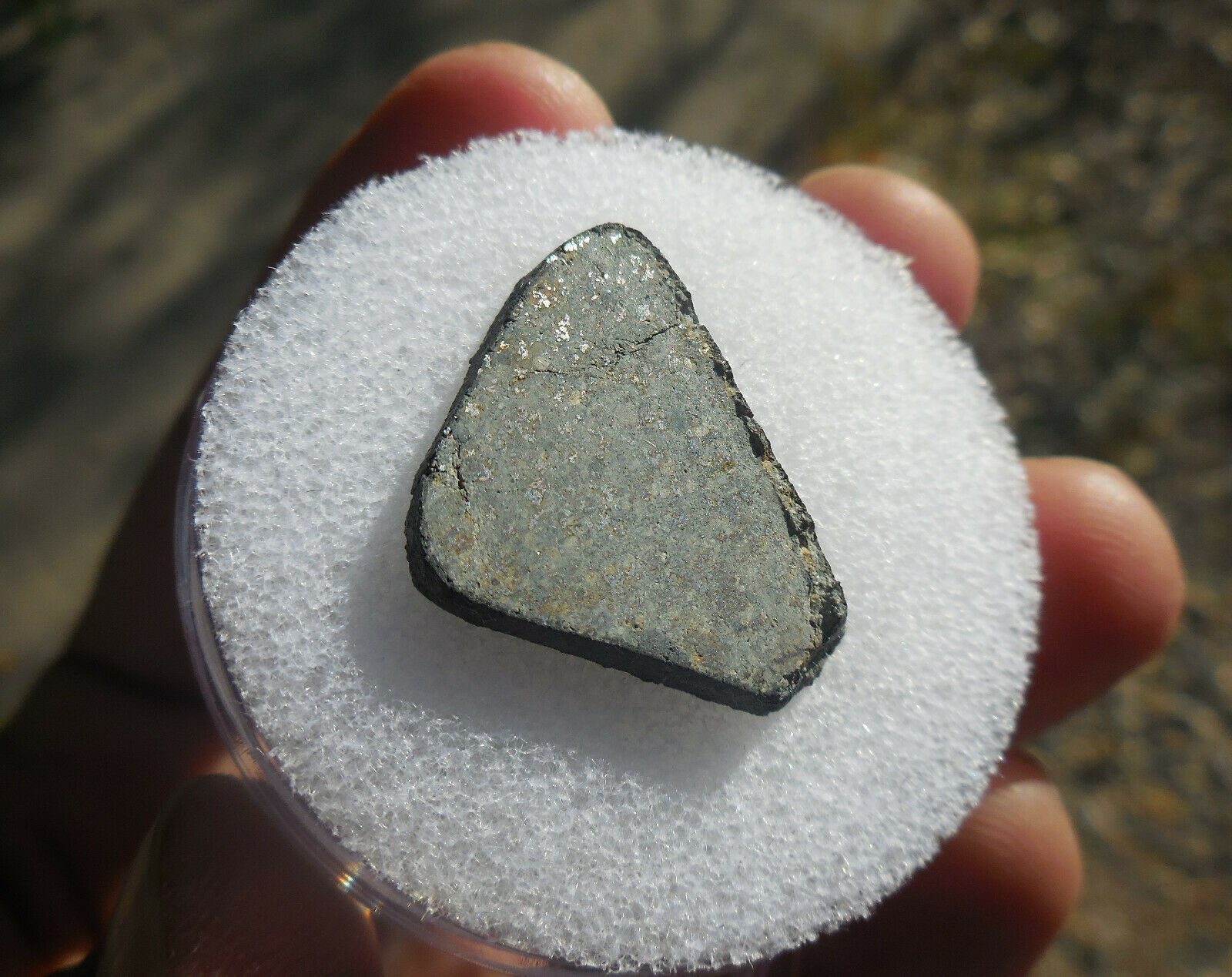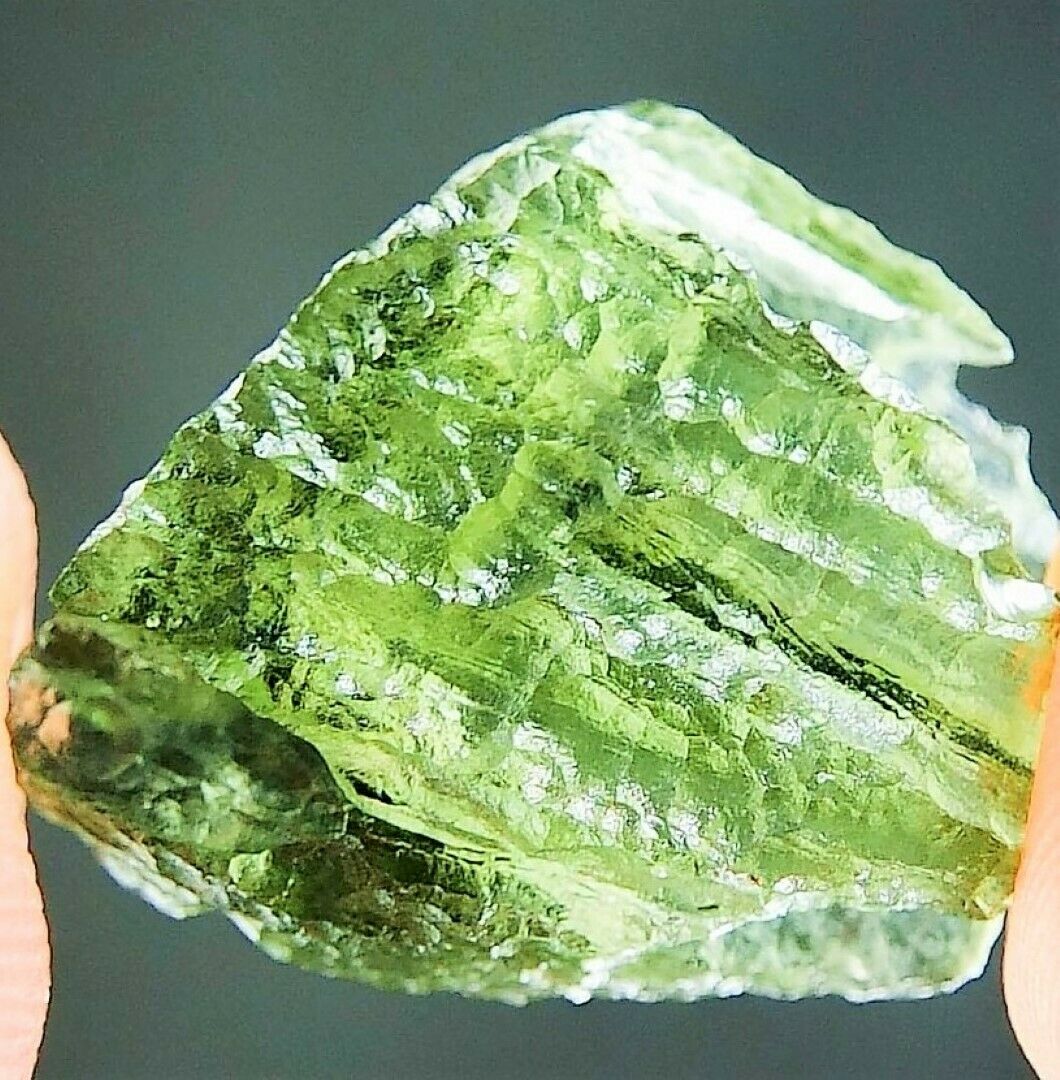-40%
2.79 gram BUZZARD COULEE METEORITE w/export permit - 2008 Canadian fall - Slice
$ 36.43
- Description
- Size Guide
Description
My name is Ruben Garcia aka MrMeteorite and I’m a meteorite dealer/collector. I have dealt in meteorites for 17 years and it’s been a wonderful ride.I’ve been featured in many books and magazines about meteorites, like Sky and Telescope, Discover, Iguana, Meteorite Times, and even the latest book by O. Richard and Dorothy Norton, called “What’s so Mysterious about Meteorites?”
I’ve also appeared in such TV shows as, Meteorite Men, Nova Science NOW, Cash and Treasures, and the United Stats of America with Hosts “The Sklar Brothers”. Of course, I’ve also been the subject of newspapers all across the country and various NPR and BBC radio shows.
I typically sell to high profile museums and universities all over the world. Everything I sell here is guaranteed just as if I were selling to a museum.
Payment is due upon auctions end, unless you contact me and want to wait a few days to bid on more items in order to combine shipping.
I include a business card sized label that describes each particular specimen!
Payment is due upon auction end.
Bid with confidence as all my auctions are guaranteed!
About this particular meteorite from the Meteoritical Bulletin
Buzzard Coulee
Basic information
Name:
Buzzard Coulee
This is an OFFICIAL meteorite name.
Abbreviation:
There is no official abbreviation for this meteorite.
Observed fall:
Yes
Year fell:
2008
Country:
Canada
Mass:
41 kg
Classification
history:
Meteoritical Bulletin:
(2009)
H4
Recommended:
This is 1 of 5949 approved meteorites (plus 2 unapproved names) classified as H4.
)
Comments:
Approved 12 Feb 2009
Writeup
Buzzard Coulee
52°59.76′N, 109°50.89′W
Wilton Rural Municipality, Saskatchewan, Canada
Fall: 20 November 2008; 17:26:45 MST (UT + 7)
Ordinary chondrite (H4)
History:
A bright fireball was widely observed across Alberta, Saskatchewan and Manitoba during late twilight on November 20, 2008. The fireball and subsequent dust trail, or shadows cast by the fireball, were recorded by all-sky and security video cameras establishing that its brightest portion occurred from 17:26:40 to 17:26:45 MST. The fireball traveled approximately north to south with an elevation angle of ~60°. Abundant sonic phenomena were reported including anomalous sounds, explosion booms, sonic booms from individual fragments and whirring sounds interpreted as produced by individual fragments falling to ground; the fireball’s explosions were also widely recorded by Comprehensive Test Ban Treaty infrasound stations establishing an energy release of approximately one third of a kiloton, indicating an original meteoroid mass of ~10 tons. Interviews of eyewitnesses and crude calibrations of security cameras constrained the fall region and the first search attempt led to meteorites being recovered off the ice of a manmade pond late on November 27, 2008. Subsequent searches led to recovery of more than one hundred individual fragments before December 6 when increasing snow cover made further searching unproductive. A strewn field at least seven kilometers long and approximately three km wide with a wind drift tail of an additional three km eastwards has been crudely outlined.
Physical characteristics:
A total of 129 well-substantiated pieces totaling ~41 kg have been recovered, but dozens of additional recovered specimens are indicated. The meteorites are distinguished by the large number of specimens with immature ablation surfaces (angular shapes with numerous small piezoglypts); up-range in the strewn field a larger proportion of mature ablation surfaces and oriented individuals are found. The fusion crust is a typical dark gray for an ordinary chondrite fall. The fall is also distinguished by the large proportion of meteorites that exhibit freshly broken surfaces with no fusion crust; broken surfaces with variable amounts of “painting” by fusion crust are also common.
Petrography
(M. Hutson and A. Ruzicka,
Cascadia
; E. Milley and A. Hildebrand,
UCalg
): Most surfaces show no brecciation, but one surface has a slightly lighter gray angular clast in a uniform gray matrix. Two different chondrite textures are visible in one thin section, but boundaries between the two regions are indistinct. One area has welldefined chondrules. The other region has more opaques with fewer easily visible chondrules, but has numerous smaller cryptocrystalline chondrules and chondrule fragments. Another section contains a light colored, coarse grained, pyroxene-rich inclusion with an igneous texture.
Mineral compositions and geochemistry:
Olivine (Fa
17.8 ± 0.3
) with PMD Fa = 1.3, low-Ca pyroxene (Fs
16.6 ± 0.8
, Wo
1
.
87 ± 0.8
) with PMD Fs = 3.9, high-Ca pyroxene (Fs
12.4 ± 3.3
, Wo
20.1 ± 11.2
). The composition of high-Ca pyroxene is suggestive of pigeonite, but may be an intimate mixture of low- and high- Ca pyroxene.
Classification:
Ordinary chondrite (H4), S2, W0.
Type specimens:
A mass of 39.1 g and two thin sections are on deposit at
UCalg
. The strewn field is almost all private land so that much of the meteorite mass is currently owned by private individuals; specimens totaling >1 kg include ~13 kg, 6.99 kg, 1.607 kg, 1.306 kg, 1.201 kg, and 1.082 kg; three of these specimens were recovered during searches organized by
UCalg
and collaborating institutions.














